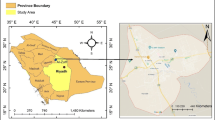Abstract
Uranium mine workers are exposed to ore dust containing uranium and its daughter products during different mining operations. These radionuclides may pose inhalation hazards to workers during the course of their occupation. The most significant among these radionuclides is 226Ra. The measurement of radium body burden of uranium mine workers is important to assess their internal exposure. For this purpose, the radon-in-breath measurement technique has been used in the present paper. Workers at the Jaduguda mine, India, associated with different categories of mining operations were monitored between 2001 and 2007. The measurement results indicate that workers—depending on mining operation category—show 226Ra body burdens ranging from 0.15 to 2.85 kBq. The maximum body burden was found for workers associated with timbering operations, with an average 226Ra body burden of 0.85 ± 0.54 kBq. Overall, the average value observed for 800 workers was 0.76 ± 0.51 kBq, which gives rise to an average effective dose of 1.67 mSv per year for inhalation and 0.21 mSv per year for ingestion.


Similar content being viewed by others
References
Ahmed JU (1981) Occupational radiological safety in uranium mines and mills. IAEA Bull 23(2):29–32
Bhola KL, Rama Rao YN, Suri Sastry C, Mehta NR (1965) Uranium mineralisation in Singhbhm thrust belt, Bihar. India Econ Geol 61:152–173
Dolan B (1989) Memorandum to P. Groer, Relationship between breath radon measurements and skeletal radium burdens, ORAU (Oak Ridge Associated Universities), September 1
Dunn JA and Dey AK (1942) The geology and petrology of eastern Singhbhum and surrounding areas. Mem Geol Surv India, No. LXIX, Pt. 2
Eisenbud M (1987) Environmental radioactivity, 3rd edn. Academic Press Inc., San Diego
IAEA (1996) International basic safety standards for protection against ionizing radiation and for the safety of radiation sources, Safety Series No. 115
IAEA (2004) Occupational radiation protection in the mining and processing of raw materials, IAEA Safety Standard Series No. RS-G-1.6
IAEA (2011) IAEA Safety standards series no. GSR part 3 (interim). Radiation protection and safety of radiation sources: international basic safety standards
ICRP-119 (2012) Compendium of dose coefficients based on ICRP publication 60. ICRP publication 119, Ann ICRP 41(Suppl.):53
ICRP-2 (1959) Report of committee II on permissible dose for internal radiation. Pergamon Press, Oxford
ICRP-26 (1977) Recommendations of international commission on radiation protection. Pergamon Press, Oxford
ICRP-54 (1989) Individual monitoring for intakes of radionuclides by workers: design and interpretation. ICRP Publication 54, Ann. ICRP Volume 19/1–3
ICRP-65 (1993) Protection against Radon-222 at home and at work. ICRP publication 65, Ann ICRP 23(2):9–15
Jacobi W (1988) Lung cancer risk from environmental exposure to radon daughters. Radiat Prot Dosim 24:19
Jha S, Ghosh DK, Mishra UC (2000) Assessment of exposure of miners to the a-rays of long-lived radionuclides associated with respirable ore dust in the Jaduguda U mine. J Environ Radioact 48:317–326
Krishnamurthy P, Nagar RK, Bagchi AK, Gupta RK (2004) Geophysical surveys for concealed uranium deposits in the north Singhbhum mobile belt. Explor Res At Miner 15:25–31
Lubin JH, Boice JD Jr (1997) Lung cancer risk from residential radon: meta-analysis of eight epidemiologic studies. J Natl Cancer Inst 89(1):49–57
Patnaik RL, Srivastava VS, Jha VN, Shukla AK, Tripathi RM, Puranik VD (2009) Radiological safety aspects of low grade uranium mine in India. Mine Vent, 2: 1013–1022, Oxford & IBH Publishing Co. Pvt. Ltd.
Rundo J (1964) Two cases of chronic occupational exposure to radioactive materials assessment of radioactivity in Man. Proceedings of a symposium, IAEA, Viena(IAEA-SM-52/5)
Smith H (1988) ICRP Publication 50 Lung cancer risk from indoor exposures to radon daughters. J Can Assoc Radiol 39(Supplement 1):144–147
Srivastava GK (1983) Estimation of radium body burden of uranium miners by measuring radon-in-exhaled breath using electro-deposition technique. M.Sc. Thesis, University of Bombay, Bombay, India
Srivastava GK, Raghavaya M, Khan AH, Kotrappa P (1984) A low level radon detection system. Health Phys 46(1):225–228
Srivastava GK, Raghavaya M, Kotrappa P, Somasundaram S (1986) Radium-226 body burden in U miners by measurement of Rn in exhaled breath. Health Phys 50:217–221
Srivastava GK, Sawant P, Rudran K (1995) Internal contamination monitoring of workers for radium in uranium ore processing industry. Bull Radiat Prot 18(1&2):174–177
Stehney AF, Norris WP, Lucas HF, Johnson WH Jr (1955) A method for measuring the rate of elimination of radon in breath. Am J Roentgenol Radium Ther Nucl Med 73:774
Toohey RE, Keane AT, Rundo J (1983) Measurement techniques for radium and the actinides in man at the Center for Human Radiobiology. Health Phys 44(Suppl. No. 1):323–341
Turner RC, Anderson W (1957) Measurement of radioactivity in a radium and radon worker. Brit J Radiol (Suppl.7):92–93
Acknowledgments
The authors express their gratitude to Dr D.N. Sharma, Director, Health, Safety and Environment Group, BARC, for his encouragement and support. The authors also express their sincere thanks to Shri D. Acharya, C&MD, UCIL, for his kind support to this study. The support of the authorities of Jaduguda Mine of M/s Uranium Corporation of India Ltd., Jaduguda, to provide facilities is thankfully acknowledged. The valuable help and encouragement received from the colleagues of the Health Physics Unit, Jaduguda, are also acknowledged.
Author information
Authors and Affiliations
Corresponding author
Rights and permissions
About this article
Cite this article
Patnaik, R.L., Jha, V.N., Kumar, R. et al. Distribution of 226Ra body burden of workers in an underground uranium mine in India. Radiat Environ Biophys 53, 739–744 (2014). https://doi.org/10.1007/s00411-014-0566-1
Received:
Accepted:
Published:
Issue Date:
DOI: https://doi.org/10.1007/s00411-014-0566-1




